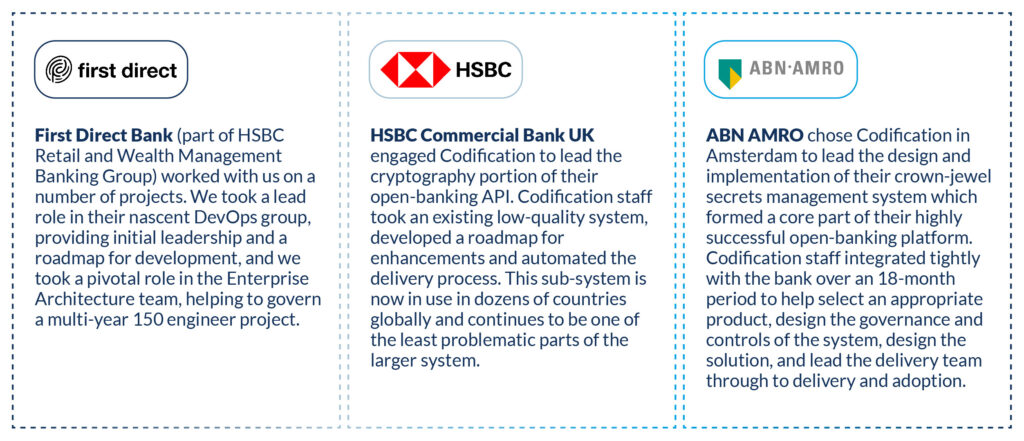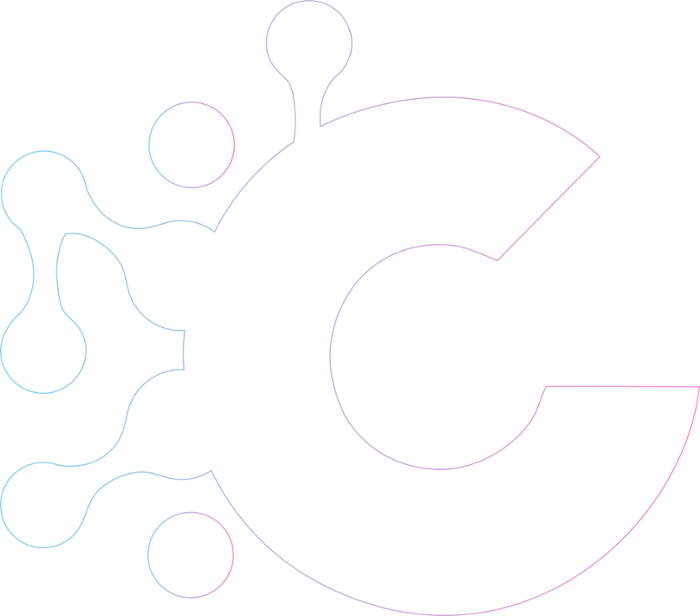The Open Banking Revolution
This article explores the uses cases in open banking and how you can to position yourself to drive real value and service clients better.
Why Open Banking?
As the global economy evolves, so does open banking. Customers make their financial data available to authorised third parties. It lets third-party financial service providers securely access banking transactions and balances from banks and financial institutions and, in some cases, initiate payments. For example, it enables customers to consolidate their accounts and products into a single view, providing them with an overview of their finances and allowing advisors to determine which products best suit them.
This access is made available through regulated APIs, which European banks created to follow the most recent set of regulations, such as PSD2, and which have now been emulated worldwide.
In summary, open banking makes transactions faster and safer and offers customers more ways to manage their finances through third parties and make payments.
Why Codification?
Codification has a strong track record of helping banks and fintech succeed with their open banking initiatives, helping them to grow their customer bases and lines of digital products. The ability to securely access and aggregate a customer’s entire financial portfolio and initiate transactions, offers a wealth of opportunity not seen in banking since the advent of the web.
Codification can help you succeed in this field by decreasing your time to market, introducing new products, and reducing operational overhead through the application of state-of-the-art processes and technologies.
Open Banking Use Cases
Lending and credit markets were the first to take advantage of open banking. Personal finance, payments, and insurance are the latest entrants into a multi-billion dollar market that is less than a decade old.
Most Open Banking scenarios involve three (3) basic roles: Payment Provider, Payment Initiator, and Aggregator. Examples of all three are referenced in the following use cases.
Aggregators read financial histories from banks and merge the data to provide a window into a customer’s financial situation. Payment initiators collect transaction information from the point of sale and request payment from a payment provider selected by the customer (via debit or credit card).
Codification’s senior engineers can help you at all stages of product engineering, but we excel in the design and architecture of automated, scalable systems that can help you reach your full potential, not just in your home region but also internationally. Using cloud-native technologies, we help reduce operational overhead allowing you to grow more rapidly and more securely.
Use Case 1: Account Aggregation
Account aggregation is already a service many financial institutions provide. Customers can obtain an overview of their numerous accounts by using an API. They can view several accounts from various financial providers on a single interface.
By aggregating information from all of a customer’s bank accounts, it becomes possible to offer the other services listed here. The ability to do this securely, with consent and control, has become a very profitable service for companies like Plaid, which integrates with over 11,000 financial institutions globally.
Use Case 2: Instant Credit Risk
Open banking speeds up the credit application process as it lets lenders immediately see a potential applicant’s credit history.
Once all of a customer’s accounts are accessible in real-time, it becomes possible to analyse their current financial position and rapidly make risky decisions. This capability underlies the majority of By Now, Pay Later (BNPL) schemes and other credit-based services, such as insurance payments.
With the customer’s consent, for example, the aggregator could send the risk information to a car showroom, where a dealer could only recommend cars that the customer could afford.
For instance, Affirm, a BNPL lender, offers loans to clients at the point of sale to help them fund purchases. Affirm works with a variety of well-known businesses, including Walmart and Amazon. The customer experience at BNPL continues after the time of sale. Customers who use the BNPL app can receive highly personalised financial counselling, which can help enhance the customer’s credit score and help ensure loans are repaid without default.
Use Case 3: Embracing New Payment Methods
Travelling on London’s tube has never been easier. A passenger needs only touch their phone to a yellow pad at the entrance and exit, and London Underground will charge their bank for the journey.
With the emergence of mobile banking, digital, and contactless payments, the world is adopting new payment methods every year that offer the best experiences each time a payment is made, regardless of the platform.
This is achieved through the use of Stripe, a payment initiator that has been configured by the customer to allow small charges against a nominated bank account. This has decreased the congestion at the entrances and exits of stations, allowing a higher throughput of passengers. Stripe takes a tiny fee to facilitate the payment, but it does this for millions of daily journeys. Google Pay, Apple Pay, WeChat Pay, etc. are all based on Stripe technology in over 135 currencies.
Use Case 4: Personalising Products and Experiences
A bank that can see its clients’ full financial position in real time can offer higher-quality wealth management services while reducing risk. It becomes possible to offer a full portfolio of services under a single brand, including health, wealth, and insurance, all of which can be tailored to a person’s needs and risk appetite. Because this becomes automatable, it becomes possible to offer these services to a wider range of clients than ever before.
For instance, Revolut, a neobank that offers an all-in-one app, helps customers manage their finances. The app allows for hyper-personalisation of the customer experience, third-party integrations, and financial inclusion features such as fractional stock trading and crypto wallets.
Use Case 5: Personal Finance – Planning and Advice
Analysing financial history across all sources in real-time will allow customers unprecedented insights into their financial positions and allow specialised software to offer advice on all aspects of financial discipline. With the rise of automated analysis software (AI), providing high-quality advice at a very low cost and scale has finally become possible.
Centralising data helps banks and financial institutions understand customers’ needs and show them how their funds are performing, creating financial insights.
For instance, Mint by Intuit, a personalised financial management app, allows you to link all your accounts, take control of your finances, and analyse your spending. All-in-one platform for personalised insights and subscription monitoring.
Our Engagement Method
Our structured approach ensures your needs are met with minimal surprises along the way. Based on industry best practices, our proven methodology spans five (5) phases.

Phase 1: High-level requirement gathering. Depending on the complexity of the requirements, this can take from a couple of days to a week or two and may include interviews and workshops with the project’s leadership team and stakeholders.
Phase 2: Capability assessment, which typically takes a week or two to complete. This shows the systems that are part of the project and your level of skill when it comes to putting the project into action. The information gathered here goes into the next phase to help design the implementation roadmap and plan the project.
Phase 3: The planning phase. We help draw up the solution design and plan the project to fit your needs, budget, and timescales, including identifying the key milestones, dependencies, and resources that will be required. Codification has a well-earned reputation for designing high-quality, fully automated solutions that significantly reduce the total cost of ownership.
Phase 4: Project implementation is often accomplished through a combination of consultation, training, and staff augmentation. Codification applies a fully automated, cloud native, security-first approach to our engineering practices, resulting in repeatable, robust systems that minimise costs.
Phase 5: Through our managed services offering, we can address the time and resource burdens you may encounter while managing the new cloud native status quo. Through our talent pool and consulting services, we provide continuous, ongoing support to make sure your IT needs are met reliably and consistently.
The Codification Experience

Ready to Adopt the Open Banking Revolution?
Contact us to learn more with one of our client principals.

